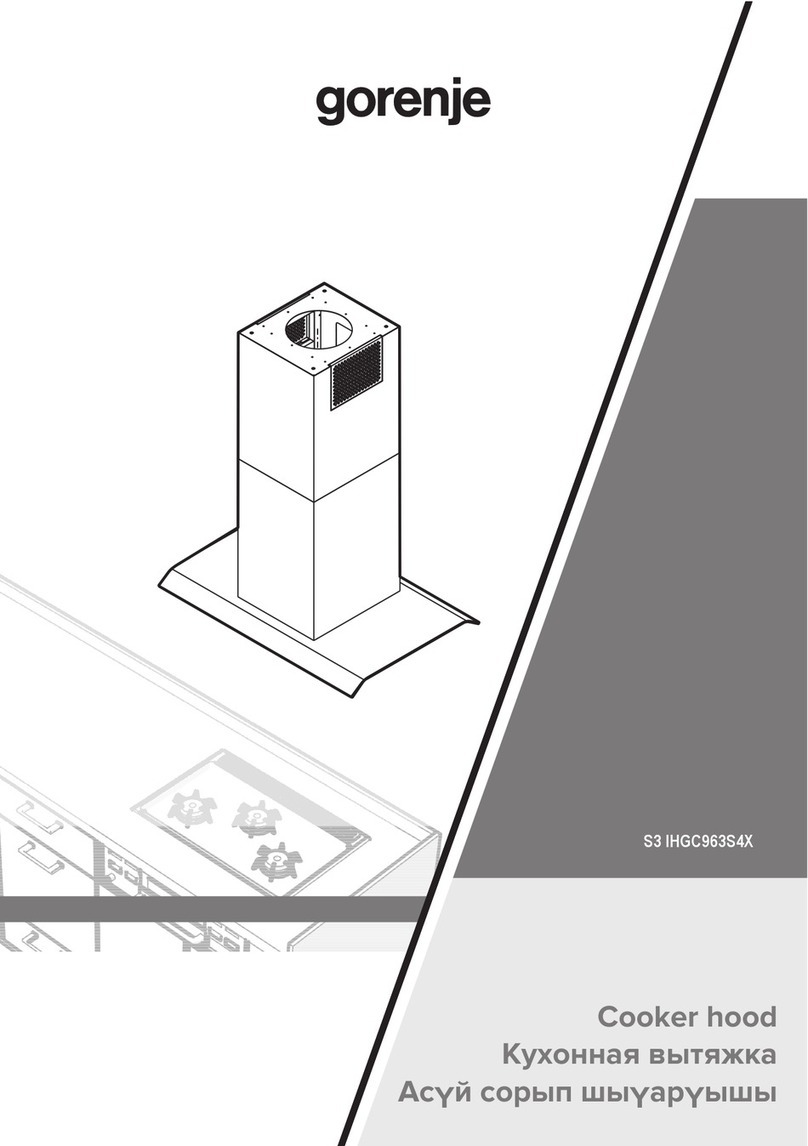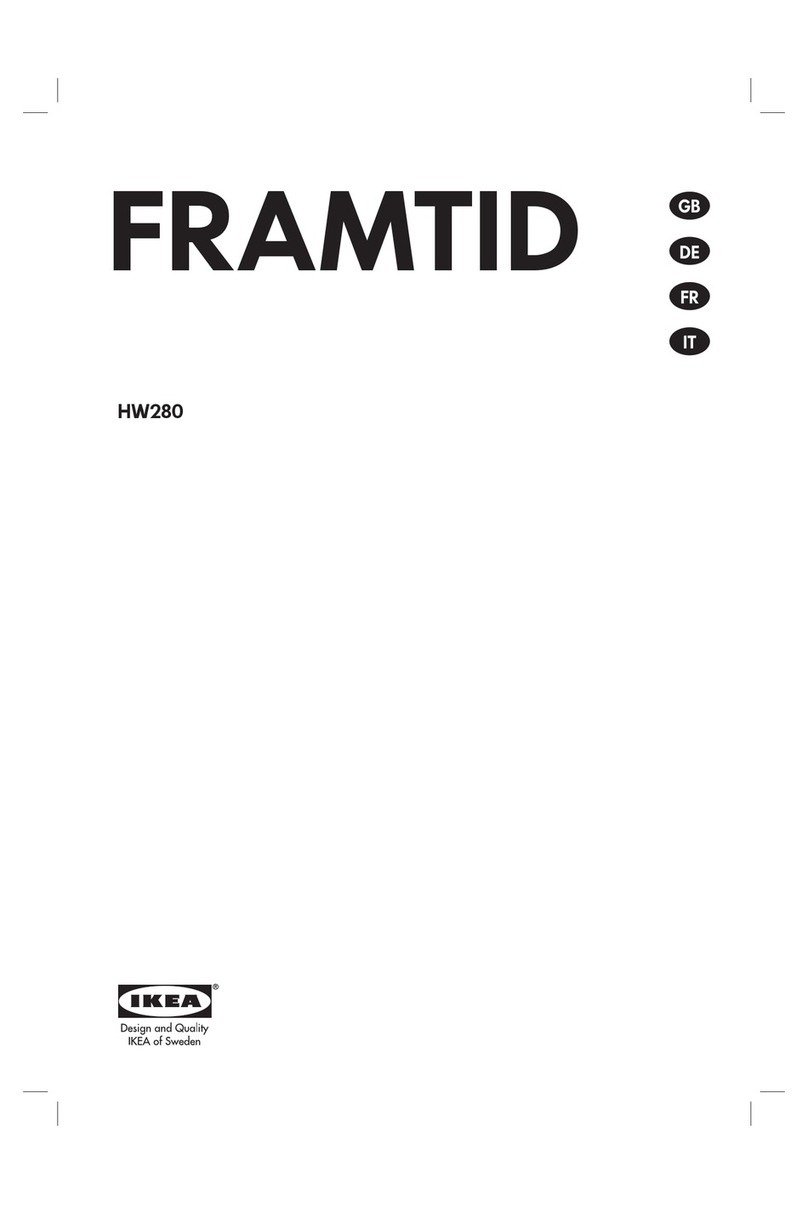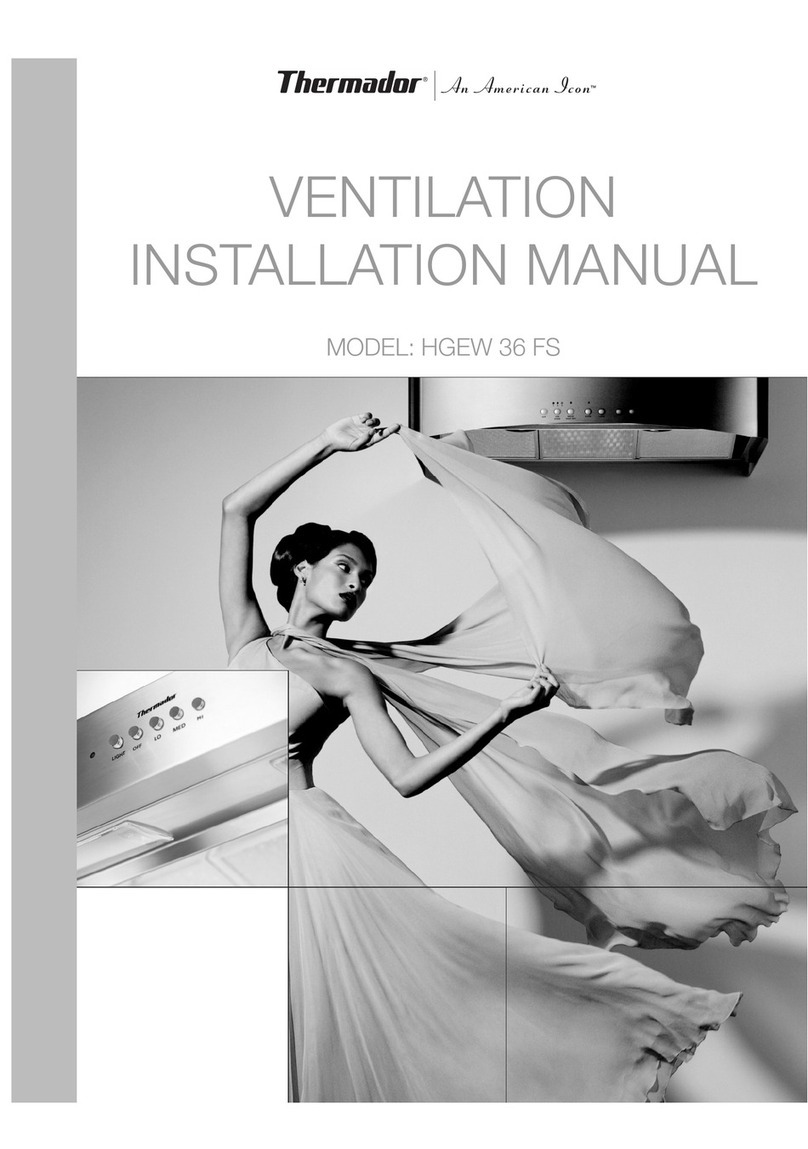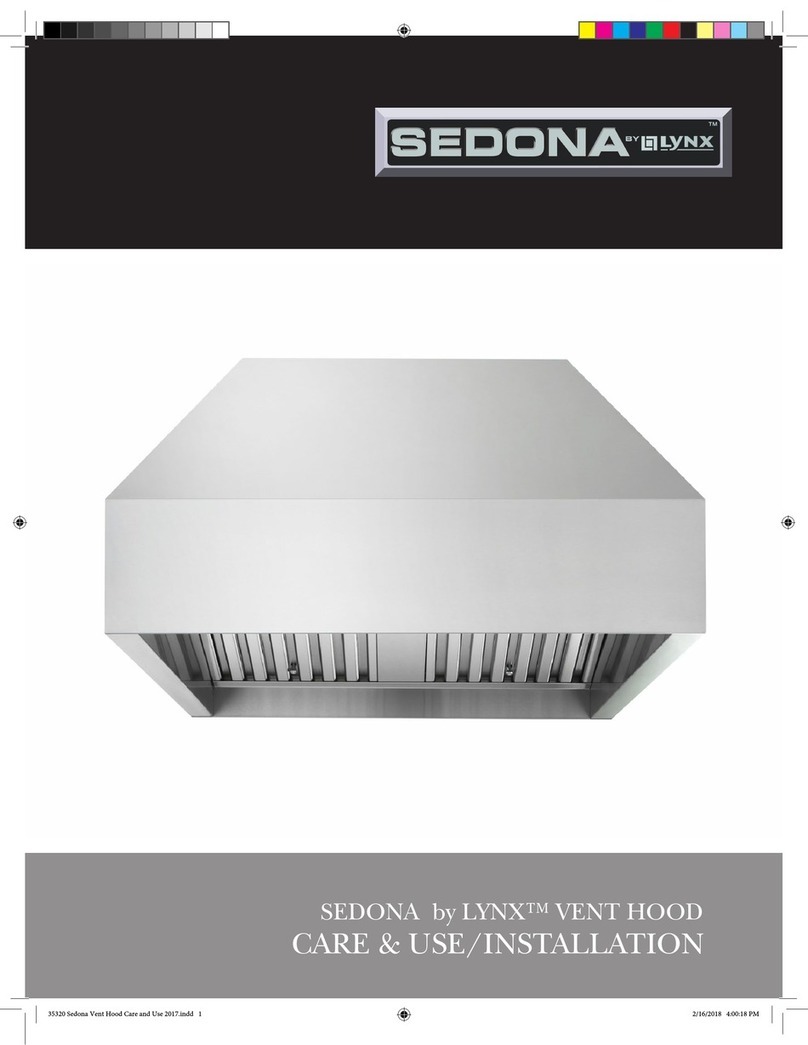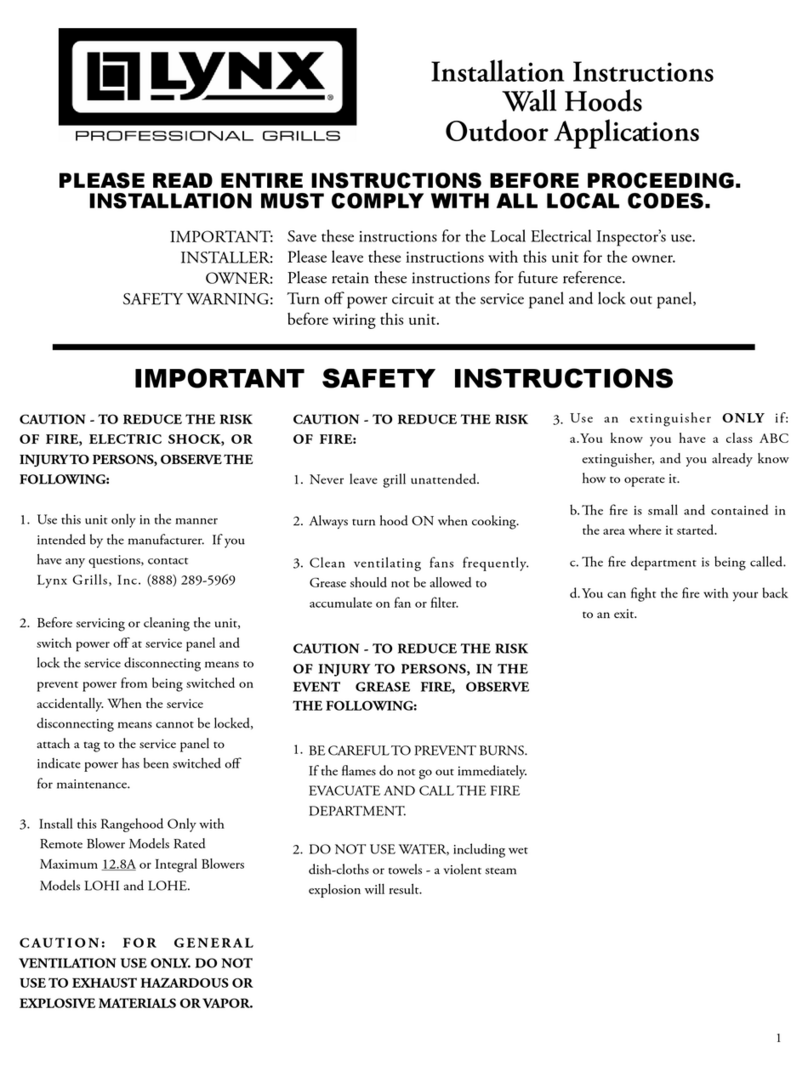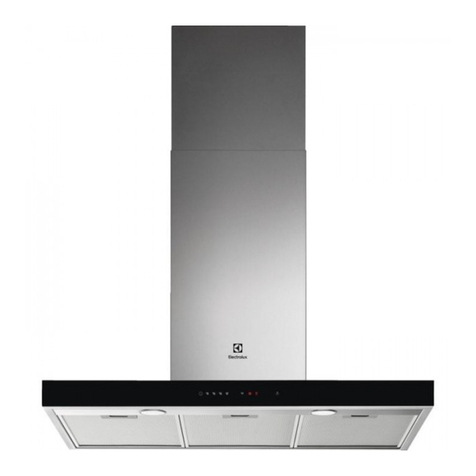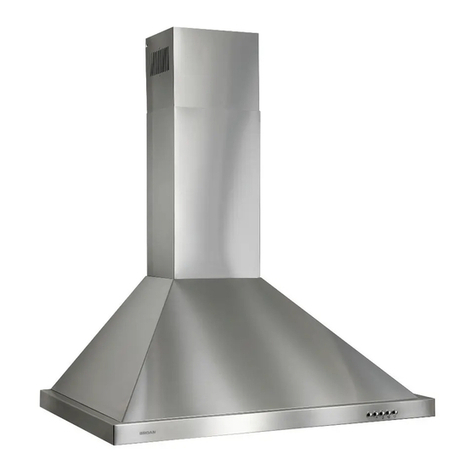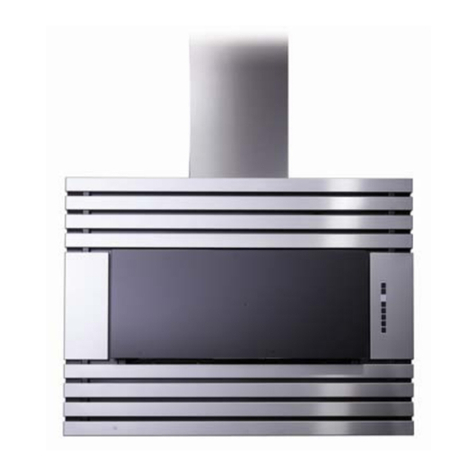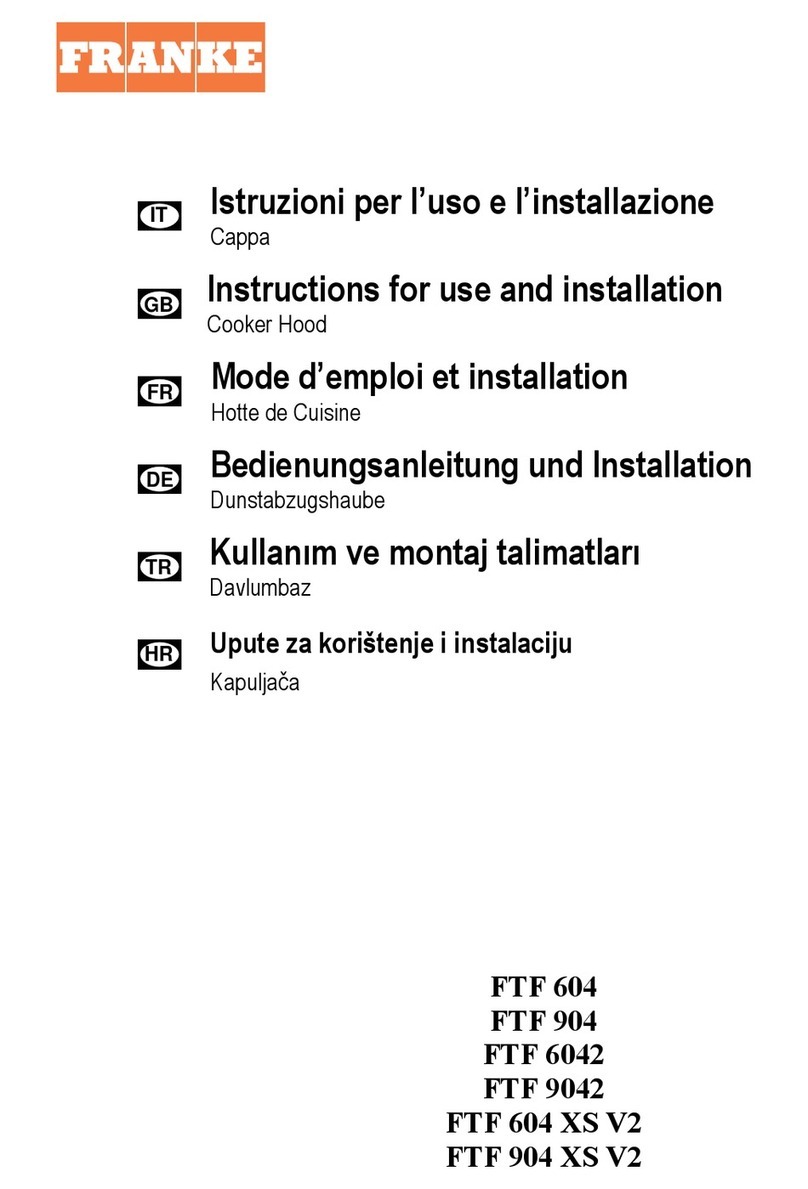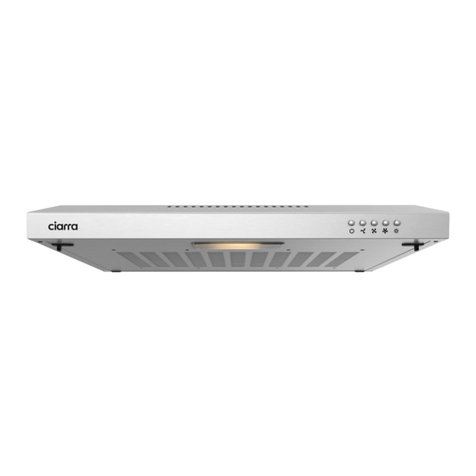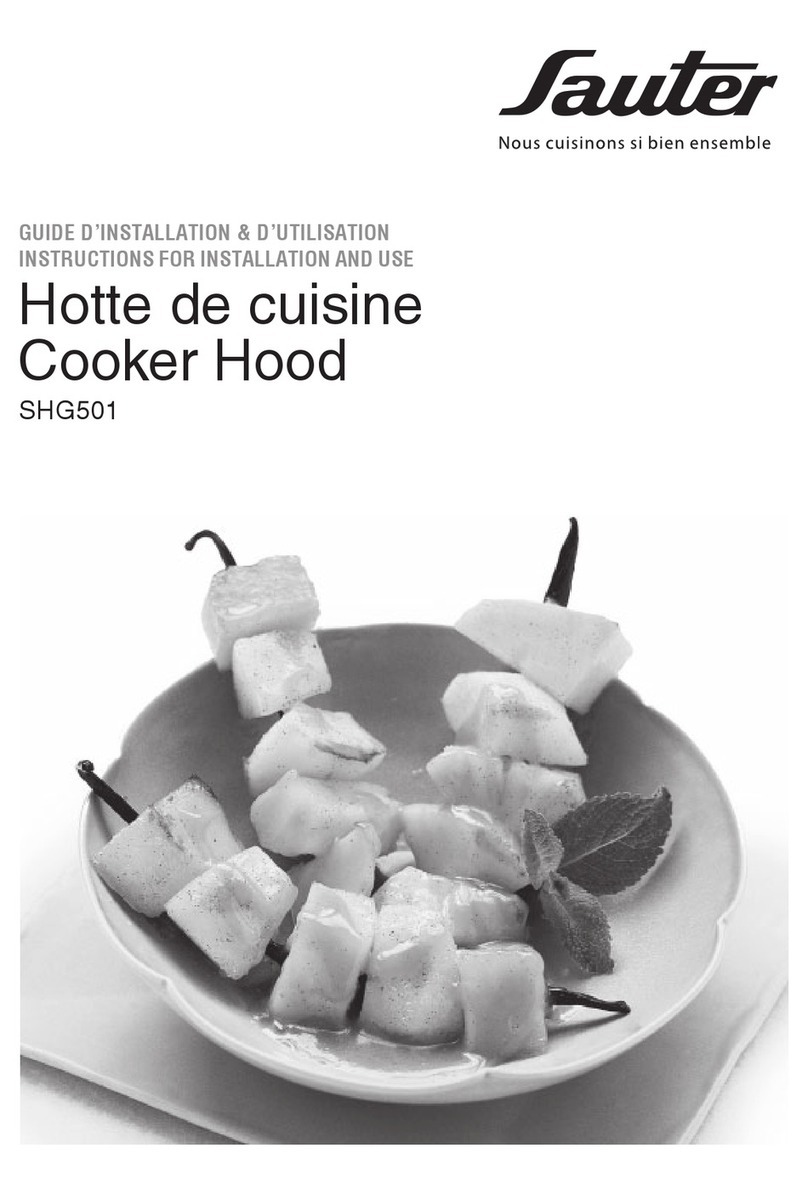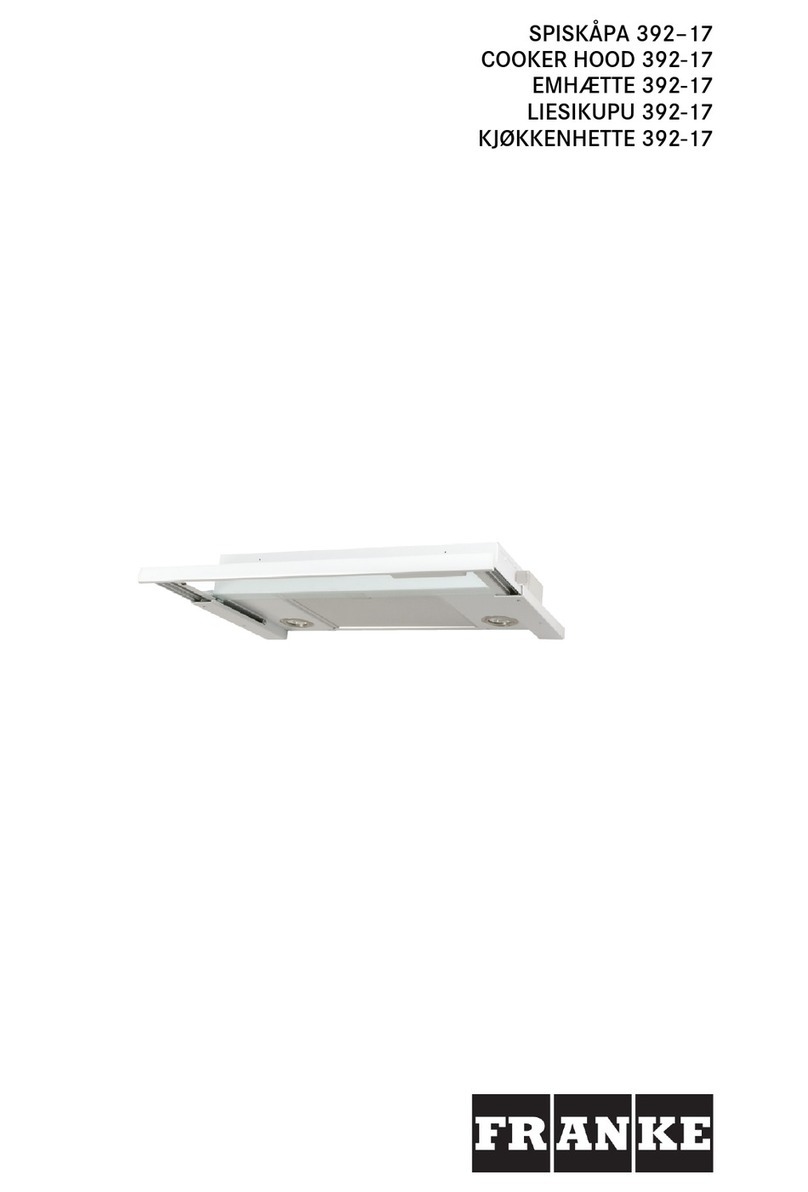
Page 1 of 8 P/N 11857.00 Rev A
INSTALLATION INSTRUCTIONS
HOOD MODELS –LOH36, LOH48 & LOH60
IMPORTANT SAFETY INSTRUCTIONS
PLEASE READ ENTIRE INSTRUCTION BEFORE PROCEEDING.
INSTALLATIONS MUST COMPLY WITH ALL LOCAL CODES.
IMPORTANT: Save these Instructions for the Local Electrical Inspector's use.
INSTALLER: Please leave these Installation Instructions with this unit for owner.
OWNER: Please retain these Instructions for future reference
WARNING - TO REDUCE THE RISK OF FIRE, ELECTRICAL SHOCK, OR INJURY TO PERSONS, HOODS
SHOULD BE INSTALLED WITH VENTILATORS APPROVED FOR USE WITH THE HOOD. SEE TABLE –1 ON
THIS PAGE FOR APPROVED VENTILATORS.
WARNING - TO REDUCE THE RISK
OF FIRE, ELECTRIC SHOCK, OR
INJURY TO PERSONS, OBSERVE
THE FOLLOWING:
A.Installation work and Electrical Wiring
Must Be Done By Qualified Person(s) In
Accordance With All Applicable Codes
& Standards. Including Fire-Rated
Construction. “WARNING” To Reduce
The Risk Of Fire, Use Only Metal Duct
Work.
B.Sufficient air is needed for proper
combustion and exhausting of gases
through the flue (chimney) of fuel
burning equipment to prevent
backdrafting. Follow the heating
equipment manufactures guideline and
safety standard such as those published
by the National Fire Protection
Association (NFPA) and the American
Societyfor Heating, Refrigeration and
Air Conditioning Engineers (ASHRAE),
and the local code authorities.
C.When cutting or drilling into wall or
ceiling, do not damage electrical wiring
and other hidden utilities.
D.Ducted fans must always be vented to the
outdoors.
E. Before Servicing or Cleaning Unit,
Switch Power off At Service Panel And
Lock Service Disconnecting Means to
Prevent Power From Being Switched On
Accidentally. When The Service
Disconnecting Means Cannot be Locked,
securely Fasten A Prominent Warning
Device, Such As A Tag, To The Service
Panel
CAUTION - TO REDUCE THE RISK OF FIRE AND TO PROPERLYEXHAUST AIR, BE SURE TO DUCT AIR
OUTSIDE FOR DUCTED FANS –DO NOT VENT EXHAUST AIR INTO SPACE WITHIN WALLS OR CEILING
OR INTO ATTICS, CRAWL SPACES OR GARAGES.
Read this instruction completely before starting installation. Planning the complete installation before starting any work is
highly recommended. This includes all aspects of the installation including hood location, ducting, electrical requirements, and
adequacy of mounting surfaces.
TABLE - 1
Model LOHI = Internal ventilator
Model LOHE = Remote ventilator
This hood series has been designed to be used with the ventilators shown in Table –1. Before
cutting into cabinets, it is necessary to confirm that the correct ventilator is being used. Your
dealer should have reviewed your needs prior to your purchase. Be sure you have the correct
ventilation system.
CAUTION: To Reduce The Risk Of Fire And Electrical Shock, Install This
Rangehood Only With Blowers Manufactured By Lynx Professional Grills.
DUCTING: Use a minimum 10" round duct for LOHI and LOHE installations. See Page –3. A standard starting transition
(33895) is included with the Hood.
SAFTY WARNING:
Turn off power circuit at the service entrance and lockout panel before wiring the range hood.
NOTE: Unit must be vented
to the outside of the building.
